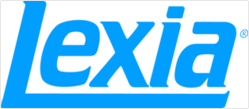Philadelphia, PA (PRWEB) March 28, 2012
From education researchers to classroom teachers, educators know that individualized instruction provides the best opportunity for students to learn at their own pace, in their own way, and be successful. However, a survey of superintendents, supervisors and principals attending the ASCD Annual Conference in Philadelphia, Penn., this week indicated that less than one-third (31 percent) believe they have the necessary time and/or resources to provide effective individualized instruction to at-risk students.
The informal survey, conducted by Lexia Learning polled nearly 150 education professionals at the ASCD Conference. Attendees were asked about their school or districts ability to provide individualized instruction to students of all levels including at-risk, on-level and advanced. Only one-third (36 percent) of educators polled indicated that teachers at their schools had the time and resources to effectively deliver individualized instruction for on-level students, while less than half (47 percent) believed they had the appropriate resources available to offer individualized instruction to advanced students.
While most educators agree that a one-size-fits-all approach to instruction doesnt work, it is troubling that very few feel they have the resources to individualize instruction to meet students needs, said Lexia President and CEO Nick Gaehde. However, a student-driven approach to learning that incorporates educational technology provides an individualized path for each student, and allows teachers to intervene with direct instruction when necessary.
Those surveyed were also asked about the burden of traditional testing, which continues to be a drain on school resources. Less than one-third (30 percent) of the respondents indicated that teachers at their school were able to gather student performance data without compromising the amount of instruction time available.
We continue hear from educators regarding their desire to test less and teach more, said Gaehde. However, educators are stating that the frequency and amount of assessment is impeding their ability to deliver effective instruction. That is why many schools are turning to an embedded assessment model, which reduces the burden of traditional testing, while providing the necessary data to inform instruction.
Lexia Reading

